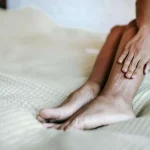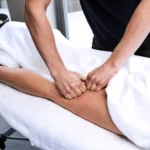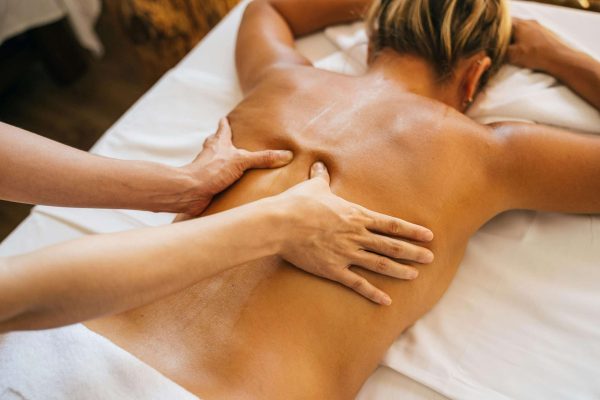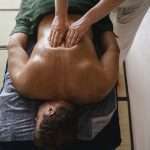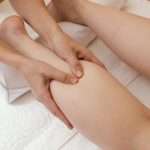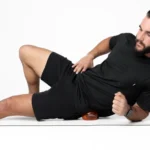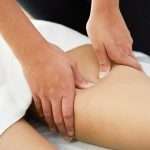Do you suffer from a strained calf muscle? If so, you know the pain that can come with it. Massaging a calf strain can help alleviate the pain, reduce inflammation, and promote recovery. In this article, we will provide a step-by-step guide on how to massage a calf strain for relief and recovery. We’ll discuss the most effective massage techniques and tips for self-massage, as well as when to seek professional help. So, if you’re looking to learn how to massage a calf strain, read on!
Table of Contents
Causes of Calf Strain
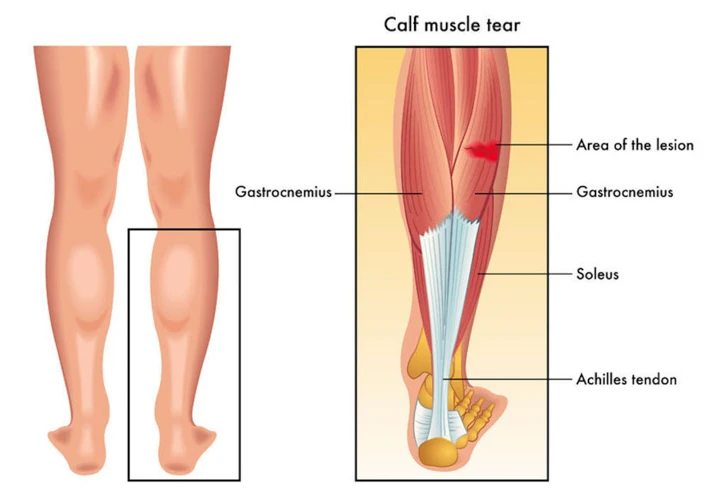
Calf strain, also known as a torn calf muscle, usually occurs due to a sudden, forceful contraction of the calf muscle. This type of strain is common in athletes, particularly those who participate in sports involving running or jumping. Other causes of calf strain include:
- Overstretching: Muscles are usually stretched during exercise and can become overstretched if they are not allowed to rest and recover properly. This can lead to a tear of the muscle fibers.
- Lack of Warm-Up: Not warming up before physical activity can lead to strains and injuries, including calf strain.
- Muscle Fatigue: Exercising for too long or too hard can cause the calf muscle to become fatigued, leading to a tear.
- Direct Trauma: A direct blow to the calf can cause a strain, such as when the leg is hit with a heavy object.
No matter the cause, calf strain can be very painful and can limit your ability to move and exercise. Learning how to massage a torn calf muscle can help reduce pain, improve mobility, and speed up the recovery process.
Signs and Symptoms of Calf Strain
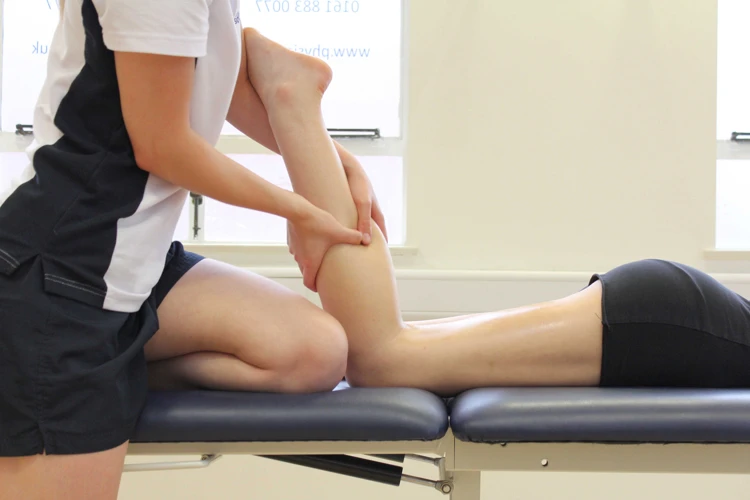
Calf strain is a common athletic injury caused by stretching or tearing the muscles and tendons of the calf. Symptoms of a calf strain typically include:
- Pain: Pain in the back of the calf that increases when the muscle is stretched or contracted.
- Swelling: Swelling and tenderness in the calf.
- Bruising: Bruising in the calf that appears a few days after the injury.
- Weakness: Weakness and instability in the calf that can affect balance and mobility.
- Stiffness: Stiffness in the calf that can make it difficult to move the ankle and foot.
If you experience any of these signs or symptoms, you should seek medical attention to ensure that you are properly diagnosed and treated. Massage is a great way to reduce pain, improve flexibility, and promote healing in a strained calf muscle.
Safety Considerations
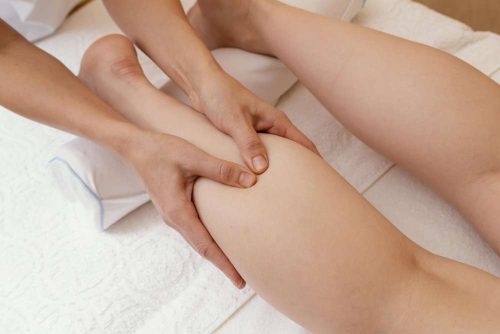
Before massaging a calf strain, it is essential to check the area for signs of infection or inflammation. Massaging an injured area that is infected can cause further damage and should be avoided. Additionally, the pressure applied during massage should remain within the patient’s pain threshold. If the massage causes too much pain, stop immediately and seek medical advice. If the patient has a medical condition, it is important to consult with a doctor before beginning massage as it may not be suitable for some conditions.
Preparing to Massage a Calf Strain
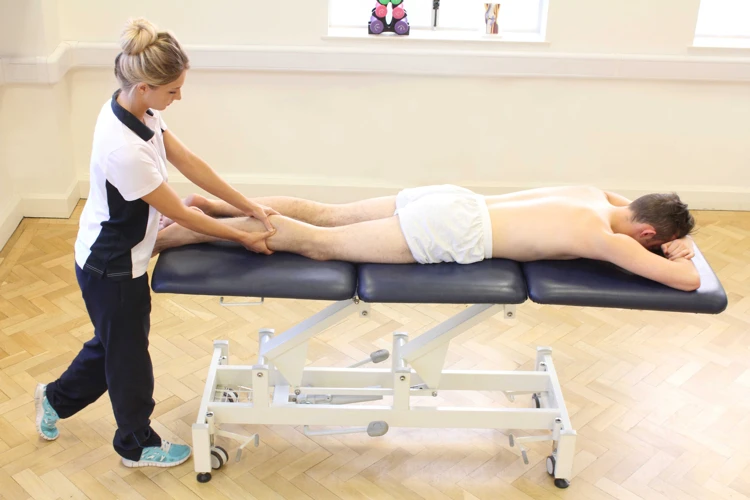
| Step | Description |
|---|---|
| 1 | Prepare the area by applying heat or cold depending on the severity of the strain: - Cold: Reduces inflammation and relieves pain. - Heat: Relieves pain and increases circulation. |
| 2 | Gently massage the calf to warm up the area before deeper techniques. Use light circular motions with your fingertips, adjusting pressure as needed. |
| 3 | Apply massage oil or lotion to your hands and the calf muscle to reduce friction and enhance comfort during the massage. |
| 4 | Keep your hands and fingers relaxed throughout to provide a comfortable and soothing massage experience. |
| 5 | Identify any areas of tenderness, swelling, or stiffness. Gently apply more targeted pressure to loosen tight or sensitive muscles. |
| 6 | Begin the massage using gentle strokes, gradually increasing pressure as the muscle warms up and relaxes. |
Step-by-Step Guide to Massaging a Calf Muscle Strain
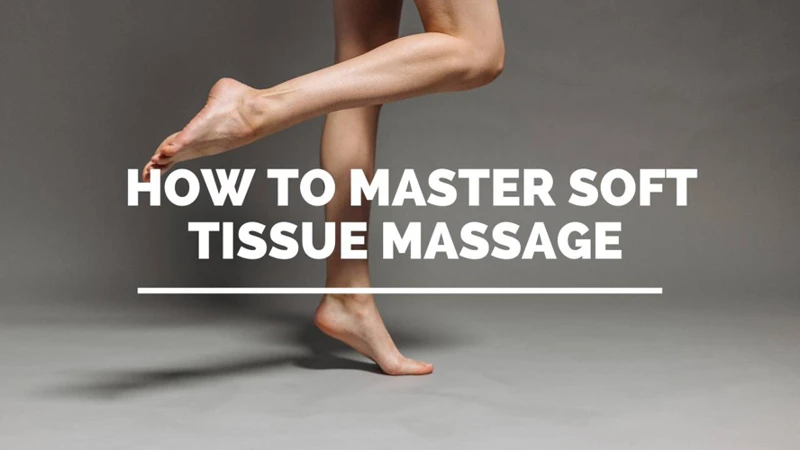
✅ 1. Position Comfortably
Sit in a chair and cross one leg over the opposite knee, giving easy access to your calf muscle.
👍 2. Apply Initial Pressure
Use your thumb to press gently yet firmly into your calf muscle, starting with small circular movements.
🔄 3. Increase Gradually
Continue massaging in circular motions, slowly increasing pressure to a comfortable yet effective level.
↕️ 4. Long Strokes
When the pressure feels right, move your thumb slowly up and down your calf muscle, using smooth, controlled strokes.
⏱️ 5. Maintain Consistency
Continue massaging your calf in this manner for several minutes, ensuring all tight areas are addressed.
🔁 6. Complete the Other Side (if needed)
If necessary, repeat the massage process on your other calf muscle.
After completing the massage, be sure to stretch the calf muscles to further help with relief and recovery.
Massage Techniques for Calf Strains

Effleurage: Begin with a gentle stroking motion with the palms of your hands to warm up the muscle and increase circulation.
Petrissage: Apply a kneading motion to the calf muscle with your thumbs and fingers, working out the knots and tension in the muscle.
Friction: Move your hands in a circular motion, pressing deeply into the muscle to help break down scar tissue and adhesions.
Tapotement: Use your hands or a massage tool to tap the calf muscle. This helps to stimulate the muscle and promote blood flow.
Cross-Fiber Friction: Use your thumbs to apply deep pressure to the calf muscle in a perpendicular direction. This helps to break down scar tissue and restore mobility.
Trigger Point Release: Apply pressure to specific points in the muscle to help release tension and relieve pain.
Compression: Wrap the calf with a bandage or an elastic wrap to help reduce swelling and stabilize the muscle.
Self-Care Practices for Calf Strain
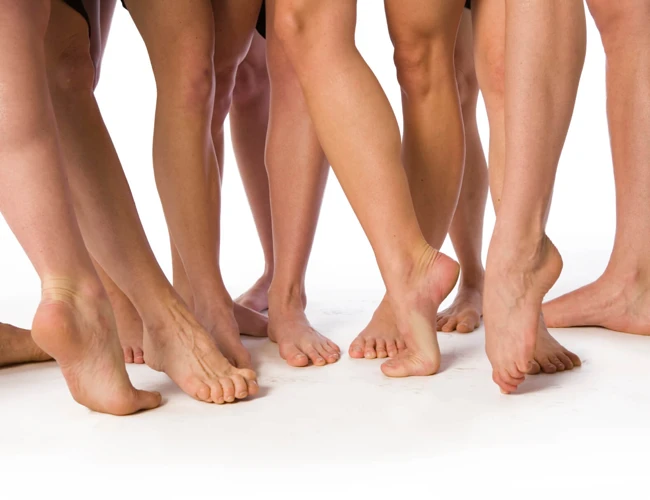
A calf strain can feel like a painful setback, but with the right approach, recovery doesn’t have to be overwhelming. Let’s explore some simple yet effective self-care tips to get you back on your feet quickly and safely.
🛌 Rest – Give Your Calf a Break!
Your calf muscles need time to heal. It’s important to take a break from high-impact activities like running or jumping. Think of rest as giving your muscles a vacation—avoid strenuous activities and stretching that might worsen the strain. Listen to your body and take it slow.
❄️ Ice – Chill Out the Swelling
Applying ice helps reduce swelling and inflammation, easing pain along the way. Always wrap ice packs in a thin cloth or towel and apply them for no more than 20 minutes at a time. This protects your skin from ice burns and helps your calf recover more comfortably.
🤗 Compression – Support Your Healing
Using compression bandages or wraps provides gentle support, helping reduce swelling and pain. Just remember, your wrap should feel snug but not overly tight—you don’t want to limit your blood flow. Comfort is key!
📈 Elevation – Raise Your Recovery Game
Elevating your leg can significantly decrease swelling and speed up recovery. Whenever possible, keep your calf raised above heart level, like resting it on a stack of pillows while you relax. Just make sure your leg stays still to avoid aggravating the injury.
🚴 Exercise – Ease Back into Motion
As soon as your pain and swelling start to fade, gently reintroduce movement. Simple, low-impact exercises like walking, cycling, swimming, or stretching can rebuild strength and flexibility safely. Go slow, stay gentle, and gradually work your way back to full strength.
Taking these small, mindful steps can lead to faster healing, less discomfort, and a smoother return to your favorite activities.
Professional Treatment Options for Calf Strain
Seeking professional help can speed up recovery and get you back to your favorite activities sooner. Here are some common and effective treatment options your healthcare provider might recommend:
- 💪 Physical Therapy
- Customized stretching and strengthening exercises tailored for your calf.
- Helps reduce inflammation, improves flexibility, and restores muscle strength.
- May include treatments like ice, heat therapy, ultrasound, and electrical stimulation for pain relief.
- 💉 Corticosteroid Injections
- Quickly reduces inflammation and eases severe pain.
- Administered by trained healthcare professionals.
- Usually combined with physical therapy for the best outcomes.
- 🛠️ Surgery
- Reserved for severe cases where other treatments haven’t helped.
- Typically needed for significant muscle or tendon tears.
- Type of surgery depends on injury severity and specific damage.
- 👐 Massage Therapy
- Promotes blood flow, reduces inflammation, and relieves muscle tension.
- Helps restore flexibility and ease pain.
- Should be performed gently and carefully to prevent further injury.
- 🛌 Rest
- Essential for proper healing; allows injured muscles to recover fully.
- Avoid activities that stress the calf (like running and jumping).
- Prioritize adequate sleep and minimize weight-bearing movements.
- 🧦 Compression
- Reduces swelling and provides comfort by stabilizing the calf.
- Compression bandages or sleeves should fit snugly, but not tightly.
- 🦿 Bracing
- Offers additional support, stability, and limits excessive movement.
- Particularly beneficial for severe calf strains.
- Often combined with other therapies for comprehensive care.
Always consult your healthcare provider before starting any treatment plan. With the right approach, you’ll be back on your feet feeling strong in no time!
Frequently Asked Questions
What are the Benefits of Calf Massage for a Strain?
- Reduces Pain: Massaging the calf muscles can help to reduce pain associated with a strain.
- Increases Circulation: Massaging the calf muscles helps to stimulate circulation, aiding in the healing process.
- Improves Flexibility: Massaging the calf muscles can help to improve flexibility and range of motion.
- Promotes Relaxation: Calf massage can help to relieve stress and tension, promoting relaxation.
- Reduces Swelling: Massaging the calf muscles can help to reduce swelling and inflammation associated with a strain.
How often should I massage my calf for a strain?
- First 48 hours: Avoid massage or apply only very gentle massage briefly (2–3 minutes) if comfortable, once or twice a day.
- After 48–72 hours: Gentle massage can be increased to once or twice daily, for 5–10 minutes each session, gradually increasing pressure as comfort allows.
Always listen to your body and seek professional advice if in doubt.
Is there any risk of further injury from calf massage?
Calf massage can be a beneficial part of recovery from calf strain, however it is important to ensure that it is done correctly and safely. Incorrect massage techniques can cause further injury to the strained muscle, so it is important to be aware of the risks and to be careful with massage pressure and technique. If the massage causes any pain or discomfort, it is best to stop and contact a doctor or therapist for advice.
How do I know if the massage I am giving is too intense?
- Check for pain: If you feel pain while giving the massage, then it is too intense.
- Check for tenderness: If your partner is feeling tenderness during the massage, then it is too intense.
- Check for muscle tension: If your partner’s calf muscle is feeling tense, then it is too intense.
- Check for discomfort: If your partner is feeling uncomfortable during the massage, then it is too intense.
If any of these signs are present, reduce the pressure and intensity of the massage.
Can you use a calf massager on a calf strain?
Yes, you can typically use a calf massager on a mild to moderate calf strain, provided you use it gently and cautiously. A calf massager can help increase circulation, reduce muscle tension, and support recovery. However, you should avoid using it aggressively or during the initial 48–72 hours if there’s significant swelling or acute pain. Always consult your healthcare provider before introducing a calf massager into your treatment routine to ensure it’s appropriate for your specific injury.
What are the Best Techniques for Calf Massage?
Friction Massage: A friction massage is a deep technique that targets the deeper layers of the muscle tissue. This technique helps to warm up the tissue and improve circulation. It is best to apply the friction massage in a circular motion with your thumb or fingertips.
Stretching: Stretching the calf muscles can help to reduce tightness and improve flexibility. It can also aid recovery and reduce the risk of further injury. To stretch the calf, stand with your feet hip-width apart and pull your toes up towards your shin until you feel a gentle stretch in the calf. Hold the stretch for 15-30 seconds.
Trigger Point Massage: Trigger points are tight areas of muscle tissue that can cause pain and tightness. To target trigger points, use your fingers to apply pressure in a circular motion for 10-15 seconds. You can also use a tennis ball to apply pressure to the trigger points.
Compression Massage: Compression massage is a technique that helps to reduce swelling and inflammation. To do a compression massage, use your fingers to apply pressure in a circular motion for 10-15 seconds. You can also use a foam roller for a deeper massage.
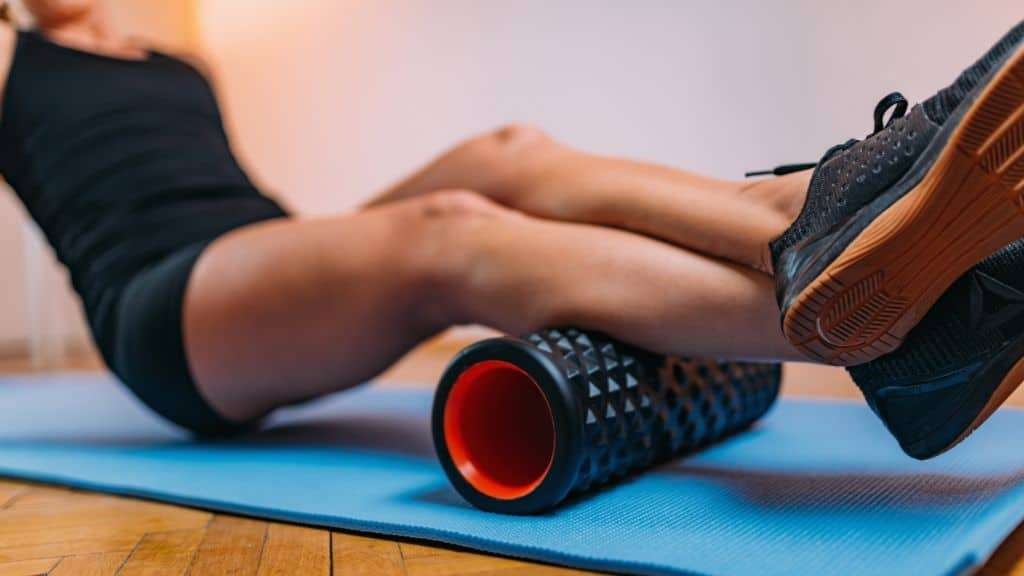
Conclusion
To effectively massage a calf strain, use a combination of effleurage, petrissage, and cross-fiber friction techniques. Always focus on the affected muscles and ensure that the pressure is comfortable. It’s best to seek medical advice if the injury is severe or if the pain persists. With regular massage, the calf strain can be relieved and the muscle can recover quickly.
📚 References
⚠️ Disclaimer:
This article is for informational purposes only and does not constitute medical advice. Always consult with a licensed healthcare provider or certified massage therapist before beginning any new treatment, especially if you have pre-existing health conditions or concerns.



